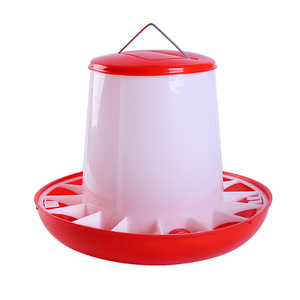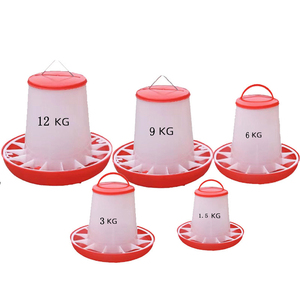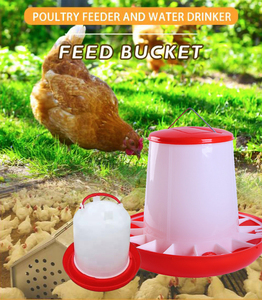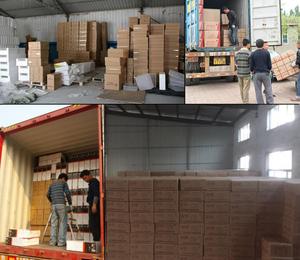
All categories
Featured selections
Trade Assurance
Buyer Central
Help Center
Get the app
Become a supplier

(774 products available)














































Water troughs have been around for ages. They are used in almost all agricultural practices and even in some construction and industrial applications. Today, there are many materials and configurations that livestock water troughs come in.
Plastic: The plastic water trough is a very popular option today. This is due to their relatively inexpensive price and easy-to-carry weight. Nowadays, plastic troughs come in durable high-density polyethylene, resistant to UV light and livestock damage. Plastic troughs also have the advantage of not rusting or corroding. Although, being lightweight, they can be easily tipped over by large animals.
Metal: Metal water troughs are perhaps the most long-lasting option available. They are extremely robust, although heavier and more expensive than plastic. Galvanized steel and aluminum are the most common materials for these troughs. This is because of their resistance to rust and corrosion. Metal troughs also have the extra benefit of providing a more stable temperature for the water. However, metal can conduct heat, making water too hot in summer and too cold in winter.
Concrete: For fixed installations, concrete troughs may offer the greatest durability. They are long-lasting but heavy, difficult to relocate, and often the most expensive. Water troughs are also prone to cracking if exposed to freezing temperatures. Additionally, concrete troughs, due to their rigidity, can crack or damage teeth if livestock excessively chews on them.
Fiberglass: Fiberglass troughs blend the robustness of metal with the lightweight properties of plastic. This makes them a great middle ground. They are resistant to rust, corrosion, and UV radiation. They can be cast into various forms and sizes. However, they are normally more expensive than plastic or metal alternatives.
Wooden: Wooden troughs, like those made of cedar or redwood, are charming and eco-friendly. They are, however, the least durable. They are inexpensive, non-toxic to animals, and provide good insulation against temperature extremes. Unfortunately, wood is prone to rot, leaking, and constant chewing by livestock, which damages the troughs.
Water troughs are primarily used in agriculture. These include large farms and ranches, where animals like cattle and horses require significant water supplies. Troughs here ensure all livestock has access to fresh water at all times. They are critical for maintaining health and productivity.
Water troughs are found on medium and small farms. These farms raise pigs, sheep, goats, chickens, and other small farming animals. They use troughs to provide stable water supply systems for their animals without manual refilling. Troughs are therefore essential for easy automated watering for poultry, pigs, or sheep kept on smaller farms.
Construction crews also install water troughs for temporary watering solutions for livestock working on remote projects. They are portable, so they provide water access for workers, especially when permanent structures are impractical.
Equestrian facilities, like centers for training and riding clubs, use troughs to provide drinking water for horses. There are troughs placed in stalls, paddocks, or riding arenas. This allows easy access to hydrated horses.
Dairy operations rely on troughs to ensure cows have constant access to water. This is because adequate water intake is important for milk production, cow health, and hydration. Therefore, troughs help meet the high drinking requirements of dairy animals.
Feedlots and finishing farms provide troughs so that cattle can drink enough water as they fatten up before processing. It helps keep the animals hydrated for their physical needs and ensures peak performance.
TROUGHS are also used in hydroponic farming. Farmers use troughs to store water and nutrient solutions for their soil-less growing systems. This provides easy access to water while also being inexpensive.
Aquaculture operations use troughs to supply water for fish and seafood farming, especially until fry and seedling stage. This is where they need small, controlled environments for growth before transfer to larger ponds or tanks.
Last but not least, water troughs are common in urban settings too. Public parks, zoos, and animal sanctuaries use them to provide water for wildlife, zoo animals, or park animals like llamas and miniature horses. Basically, troughs create sustainable water sources in community environments.
Troughs come in different designs and functionalities to cater to different animal types, climates, and user requirements. They also include useful addition features.
Flat-bottom troughs are the simplest and most basic type. They have a shallow, level basin that is easy for any animal to access. They are used for all grazing livestock. This includes cows, sheep, goats, and horses.
Bowl or bell-shaped troughs are designed with a sloped bottom that collects water in a central bowl or bell shape. It allows easy access for animals. Water stays in the center, reducing wastage. The design is ideal for pigs and some smaller animals who prefer shallower waters.
A deep trough with a steep-sided, narrow rim at the top is a high-security option. It is for animals like deer or large livestock that need a tougher barrier to prevent escape or crossing.
Submersible troughs are compact and designed to fit into a water source like a well or tank. They supply a constant water level without the need to refill manually. They are commonly used on farms to ensure an uninterrupted water supply.
Some troughs have heater elements that keep the water from freezing during extremely cold weather. They are very useful for farmers in adverse weather conditions. Also, troughs with integrated heaters are commonly used in regions that experience harsh winters.
Automatic float valve troughs maintain a constant water level by refilling when needed. This is triggered by a float mechanism that activates the water supply. Farmers do not have to bother about troughs running dry when using these troughs.
Those with solar power float valves are for locations with no electricity. The floating mechanism is powered by solar energy to refill the basin automatically when water levels drop. It is environmentally friendly and suitable for remote areas.
Self-cleaning troughs use backpressure valves and nozzles to flush debris and waste periodically. This reduces manual cleaning for a more hygienic water supply. Farmers save time and labor with self-cleaning water troughs.
Last on the list, insulated troughs also keep water cool in hot climates and warm in cold weather. They help maintain a stable water temperature for better animal hydration. Farmers can provide comfortable water conditions year-round with insulated troughs.
Water troughs have been around for ages. They are used in almost all agricultural practices and even in some construction and industrial applications. Today, there are many materials and configurations that livestock water troughs come in. All of which gets overwhelming.
So, to make the choice simpler, here are some factors to consider. The first and most important consideration is the material. Water troughs are made of plastic, metal, concrete, wood, and fiberglass. They all have their own pros and cons. Think of how long they will last, how much they will cost, and wether they prefers heavy or lightweight items.
The next consideration is size and capacity. This depends on how many animals there are and the type of animals. Larger animals, like cows and horses, need bigger troughs. On the other hand, smaller animals, like pigs and goats, need smaller ones. There are a lot of sizes available, so select one that fits the space available, too.
Then there is the location. Some troughs have to be placed permanently. Others can be placed temporarily as long as they are secured and have hard shelter from the elements. Speaking of elements, properly choose which one can withstand the local weather. For example, insulated or heated troughs for cold weather. Durable UV-resistant troughs for hot, sunny conditions.
The next factor to consider is water source and type. Certain troughs are designed for deep wells or tanks and require tougher materials. Those automatically refill from drinking water supplies like wells or mains are the most convenient.
Finally, consider the cleaning and upkeep requirements. While some troughs need constant monitoring and cleaning, others have self-cleaning water troughs that do all the dirty work for the owner.
A. Cattle are large animals, so they require a lot of water. They need about 1 to 5 gallons of water daily. The exact amount depends on how big the cattle are and the weather. When it's hot, they drink more, and when it's cooler, they drink less.
A. Water troughs made of plastic, fiberglass, and metal are the most durable. They resist extreme temperatures, UV rays, and aren't affected by other harsh conditions. During cold seasons, don't get distressed because there are heated or insulated troughs too.
Water troughs also come in a variety of price ranges. Metal troughs are costly but will last a long time. Plastic ones are cheaper but also durable and lightweight. Concrete and wooden ones are the most expensive but are permanent and very sturdy.
A. Water troughs are built to last long. Well, with regular care, the average lifespan of a water trough is 3 to 20 years. Factors like weather, the materials of the trough, and how often it gets used also affect how long it lasts. Harsh conditions wear it down faster, but a well-maintained trough can last decades.
A. Well, there are several signs. First off, if there are any rust or concrete cracks. If there are leaks, it's high time to replace it. Water stains or damage on surrounding ground are also a clear indication. Lastly, bad wear and tear on the trough edges and surfaces also mean it's time to get rid of it.